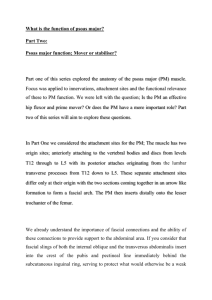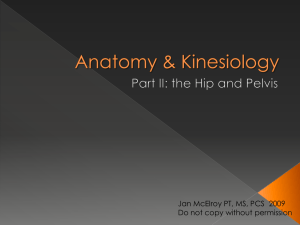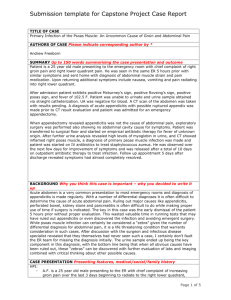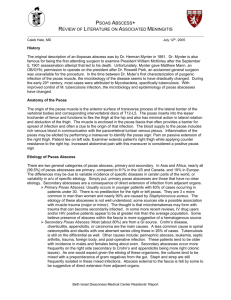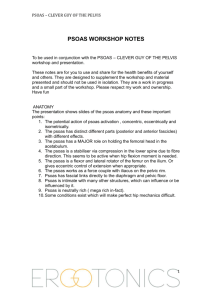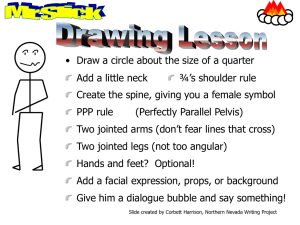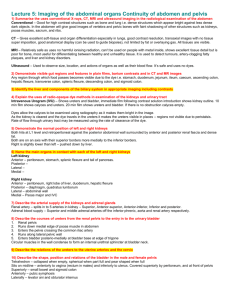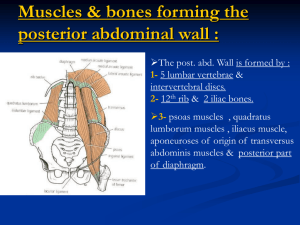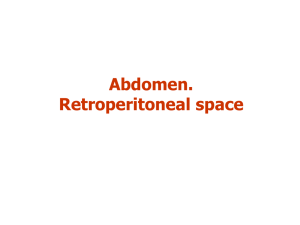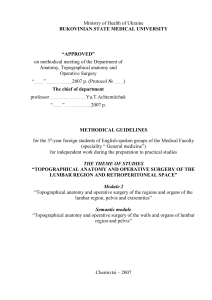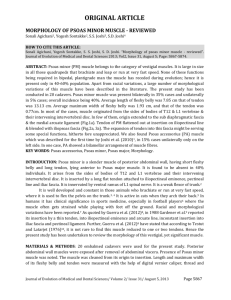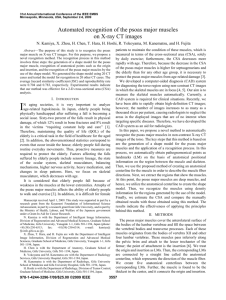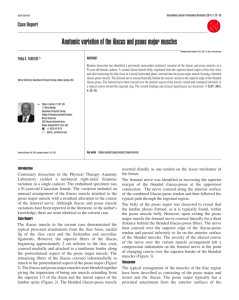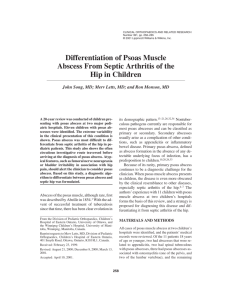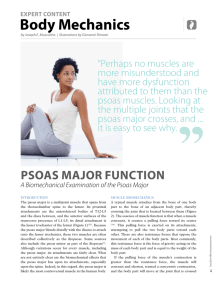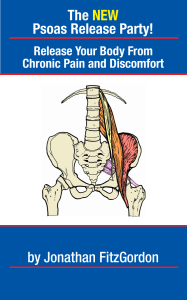File
advertisement
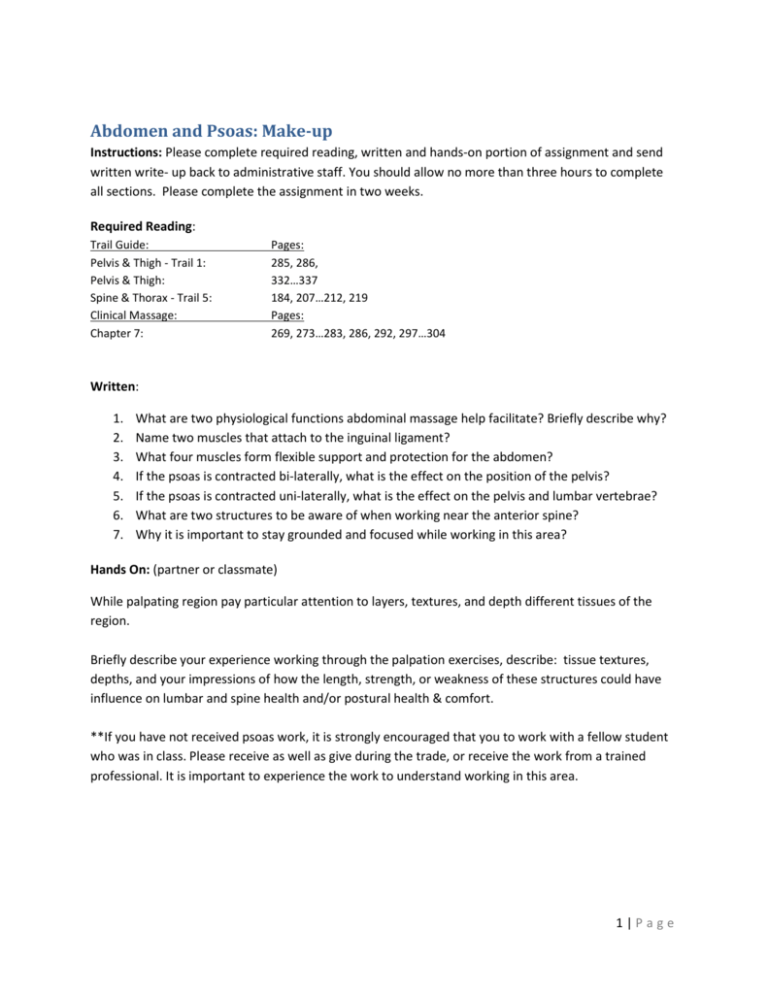
Abdomen and Psoas: Make-up Instructions: Please complete required reading, written and hands-on portion of assignment and send written write- up back to administrative staff. You should allow no more than three hours to complete all sections. Please complete the assignment in two weeks. Required Reading: Trail Guide: Pelvis & Thigh - Trail 1: Pelvis & Thigh: Spine & Thorax - Trail 5: Clinical Massage: Chapter 7: Pages: 285, 286, 332…337 184, 207…212, 219 Pages: 269, 273…283, 286, 292, 297…304 Written: 1. 2. 3. 4. 5. 6. 7. What are two physiological functions abdominal massage help facilitate? Briefly describe why? Name two muscles that attach to the inguinal ligament? What four muscles form flexible support and protection for the abdomen? If the psoas is contracted bi-laterally, what is the effect on the position of the pelvis? If the psoas is contracted uni-laterally, what is the effect on the pelvis and lumbar vertebrae? What are two structures to be aware of when working near the anterior spine? Why it is important to stay grounded and focused while working in this area? Hands On: (partner or classmate) While palpating region pay particular attention to layers, textures, and depth different tissues of the region. Briefly describe your experience working through the palpation exercises, describe: tissue textures, depths, and your impressions of how the length, strength, or weakness of these structures could have influence on lumbar and spine health and/or postural health & comfort. **If you have not received psoas work, it is strongly encouraged that you to work with a fellow student who was in class. Please receive as well as give during the trade, or receive the work from a trained professional. It is important to experience the work to understand working in this area. 1|Page Abs and Psoas Student Practice: Prep Work: Soften external girdle Transverse Abdominis /Int & Ext. Oblique Client supine Abdominal Hold Abdominal Circles Rake Transverse Abdominis, Int & Ext. Oblique Trace Costal Arch, Superior attachments, Iliac spine Transverse Abdominis /Int & Ext. Oblique: one hand on abdomen, the other under partner’s back. Sink and feel for sheets that connect the circumference of the area. Shift hands and feel for angle of resistance in large sheets. Using both hands bring tissue to end point, and stretch with partner’s breath. Primary intentions – soften and stretch tissue, relieve tension in superficial layers Secondary affect – could make more room for breath & viscera, release small fascia adhesions Rectus Abdominis: Client supine, fingers or flat palms on RA, stretch or soften with breath, taking the tissue caudal or cranial. Outline lateral boarders of RA & abdominal sheath with fingers, floating above viscera (practice layer recognition) Primary Intension – support (posture) in relation to lumbar curve & costal arch & pelvic angle) Secondary affect - breath and visceral Specific focus: Psoas : Client supine, knees up, sink slowing between belly button, ASIS, and lateral board of RA, contact Psoas. Ask partner for movement to confirm location of Psoas. Palate for texture, depth, size, shape. Move to other side and repeat. Compare the two. Talk to your partner about what you are feeling and ask them to comment. Place thumbs gently on both psoas ask partner to gently tilt their pelvis anterior and posterior, concentrating on contracting the psoas. Notice the movement of each psoas, compare the two, decide which side is creating more movement. Guide partner’s attention to the less active side and ask them to focus on moving that side more. Notice any changes in the movement or tissue, or just acknowledgment of the movement and the muscle. Primary Intention –Palpation, balance, client awareness. Exit slowly and allow work to integrate 2|Page

